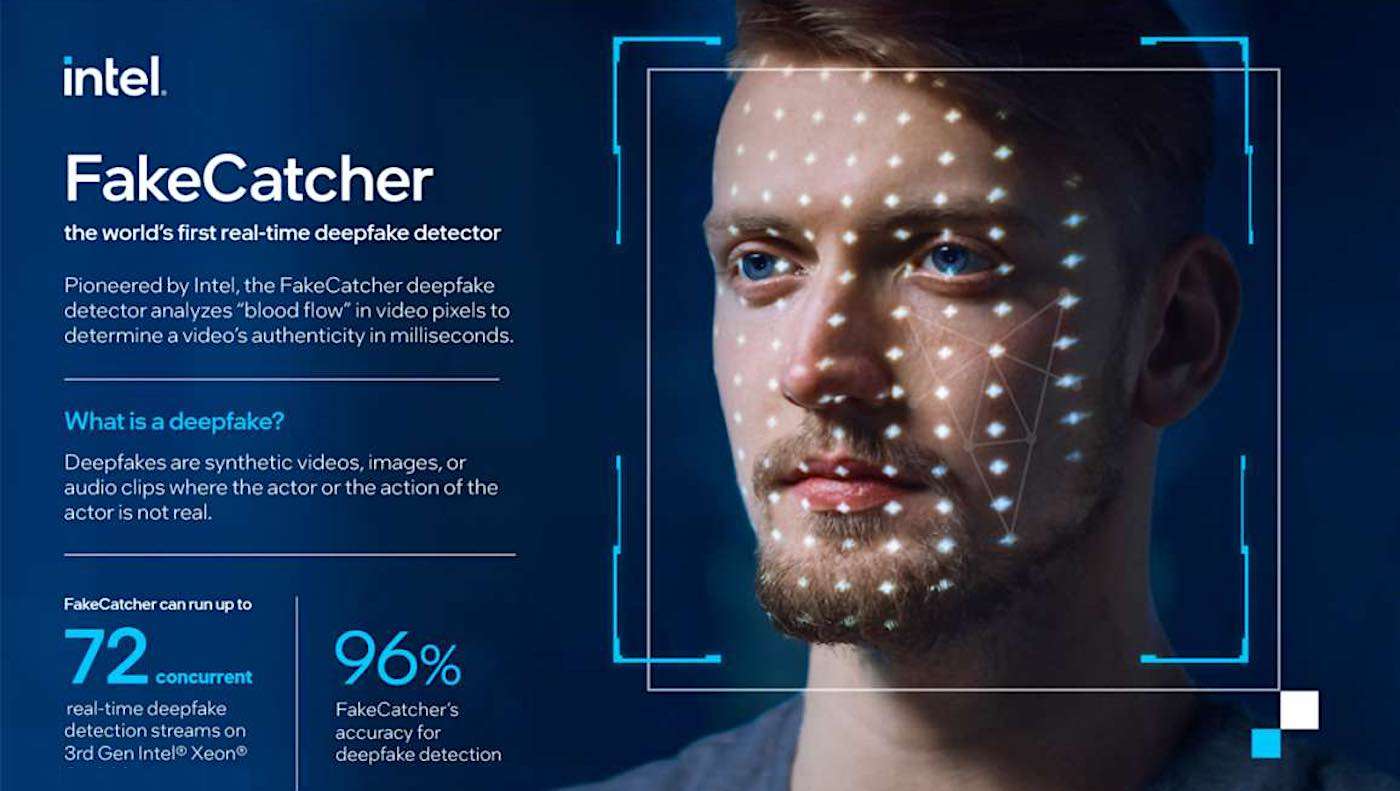Amazon.com Now Builds Packaging to Fit Items And Cut Waste-With Weather-Resistant Paper
Amazon is trialling a new packing machine which builds paper bags around individual items - to drastically cut down on packaging.

Intel technology has created the world's first real-time deepfake detection software to root out this most-sophisticated of impersonation technologies.
The software uses tiny changes in image pixelation related to the movement of blood through human veins to detect whether a recorded video is real or fake with 96% accuracy.
Called FakeCatcher, it's the first program that can catch deepfakes in real time, as most other detection apps require uploading videos for analysis, then waiting hours for results. They tend to need large data sets for deep learning programs to pour over.
Refreshingly, Ilke Demir, senior staff research scientist in Intel Labs opted for a more organic approach; one that also increases efficiency, as it's capable of monitoring 72 video streams at once.
"FakeCatcher is the first approach that is telling us why we are real, why we are authentic," said Demir. "It's like a watermark of being human."
We live in strange times, and the deep fake is a good example of how far our technological power has, as Dr. King once said, outgrown our spiritual power.
Using databases of video camera footage or recorded speech, deepfakes use computer learning to construct audio or video recordings of real people saying and doing things they have never said or done. Politicians, radio personalities, or actors—people with long histories of recorded material, are at particularly elevated risk for deepfakes.
Take Joe Rogan for example: he is both a now-controversial personality, and one of the most recorded voices in American history between his time as a comedian, UFC commentator, and podcaster.
If the majority of Joe Rogan Experience podcasts last 3 hours, and we say for argument's sake he speaks half the time, then someone attempting to make a deepfake of Rogan would have around 3,000 hours of words to choose from across his almost-2,000 episodes.
The reason for this explanation is that someone already did this, and Rogan played it on his show to highlight the difficulties future societes will have in trying to determine what's real.
The deepfakers created a fake announcement using recorded audio of Rogan, to create a fake announcement that Rogan was investing into a professional ice hockey team consisting entirely of chimpanzees. Don't let your kids hear it though, as the deepfaker didn't skimp on the vulgarity.
Rogan isn't the only one; several celebrities like Elon Musk, Jordan Peterson, and Leonardo DiCaprio have all already been the subject of this digital impersonation
Businesses too, are at risk for these videos. Estimates range as high as $188 billion per year for American businesses to defend themselves against all manner of security threats originating from impersonations.
"FakeCatcher is a part of a bigger research team at Intel called Trusted Media, which is working on manipulated content detection—deepfakes—responsible generation and media provenance," she said. "In the shorter term, detection is actually the solution to deepfakes — and we are developing many different detectors based on different authenticity clues, like gaze detection."
You can watch the program work in this presentation video here.
SHARE This Hi-Tech Story With Your Friends On Social Media…
Be the first to comment